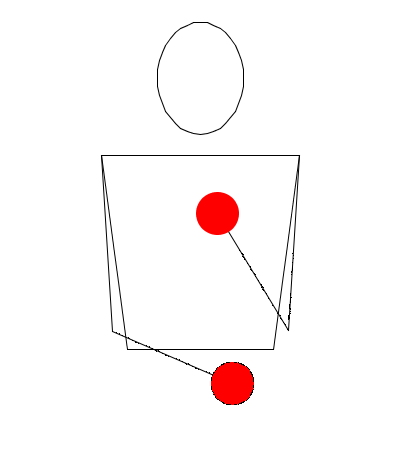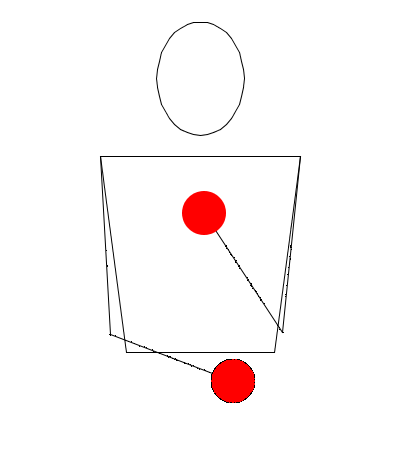Relf's Revenge 6
Other Tutorials:
- Siteswap: 3
- Difficulty (1-10): 6
- Prerequisites: Rubenstein's Revenge
- Related Tricks: Relf's Revenge

Relf's Revenge 6 is a three
ball pattern that, ironically, has very little in common with Relf's
Revenge. The trick can best be imagined as Rubenstein's Revenge with the
"U-ball" thrown from the center of your body instead of under-the-arm. This
forces a change in the arm flourish and gives the pattern a different
overall cadence. Before attempting Relf's Revenge it is important that you
already be fairly comfortable with Rubenstein's Revenge, but no experience
with Relf's Revenge is necessary.
To begin learning Relf's Revenge 6, start with one ball
in your dominant hand and two balls in your non-dominant hand. Raise your
dominant hand up to about shoulder height, and then shift both of your hands
to the center of your body such that your non-dominant hand is positioned
under your dominant hand. Make a roughly vertical throw from your
non-dominant hand (ideally it should be angled slightly toward your
non-dominant side) while simultaneously swinging your dominant hand under
and around the thrown ball. As the ball peaks, your dominant hand should be
circling over it; you will then throw the ball in your dominant hand over
toward the non-dominant side of your body and claw-catch the first ball. So
far this should all feel pretty similar to Rubenstein's Revenge. After the
claw-catch you will then swing your dominant hand in a "C" shape toward the
dominant side of your body while making a throw from your non-dominant
hand—the throw will be made from the center of your body toward your
dominant side, but it should be mostly vertical. This will clear space for
your non-dominant hand to catch the ball thrown by your dominant hand. Your
dominant hand will then, after completing its "C"-shaped flourish, catch the
ball thrown from your non-dominant hand.
As shown, practice this on both sides. You have just
completed one cycle of Relf's Revenge 6. In order to connect both sides of
the pattern together, you must change the way you catch the ball thrown by
your dominant hand. Instead of simply letting the ball descend into your
non-dominant hand, you are going to reach up and claw-catch it. You will
then continue the downward motion of the claw-catch while simultaneously
making a throw from your dominant hand that mirrors the very first throw you
made; this will clear space for your dominant hand to catch the ball your
non-dominant hand had thrown (the last throw of the previous step). You will
then swing your non-dominant hand around and under the ball just thrown by
your dominant hand before finally claw-catching it. You should end up with
two balls in your non-dominant hand and one ball in your dominant hand.
Practice this on both sides. To continue the pattern simply
make a throw from your non-dominant hand before doing the claw-catch, and
then just keep mirroring the first set of throws and catches you performed.
